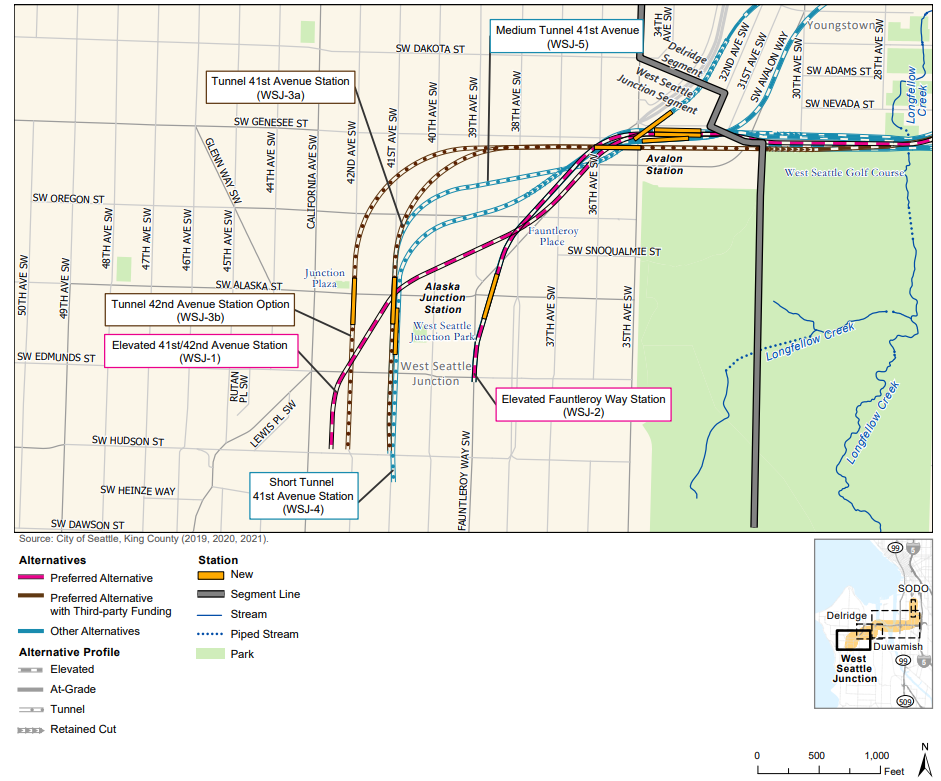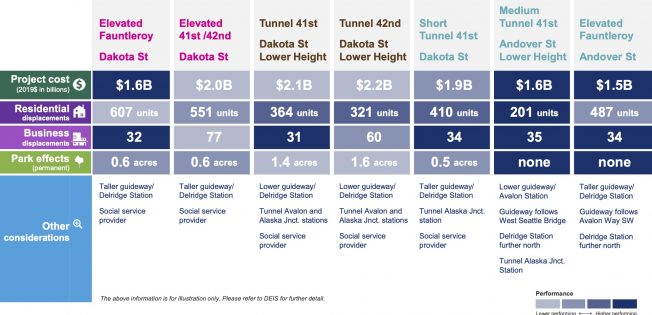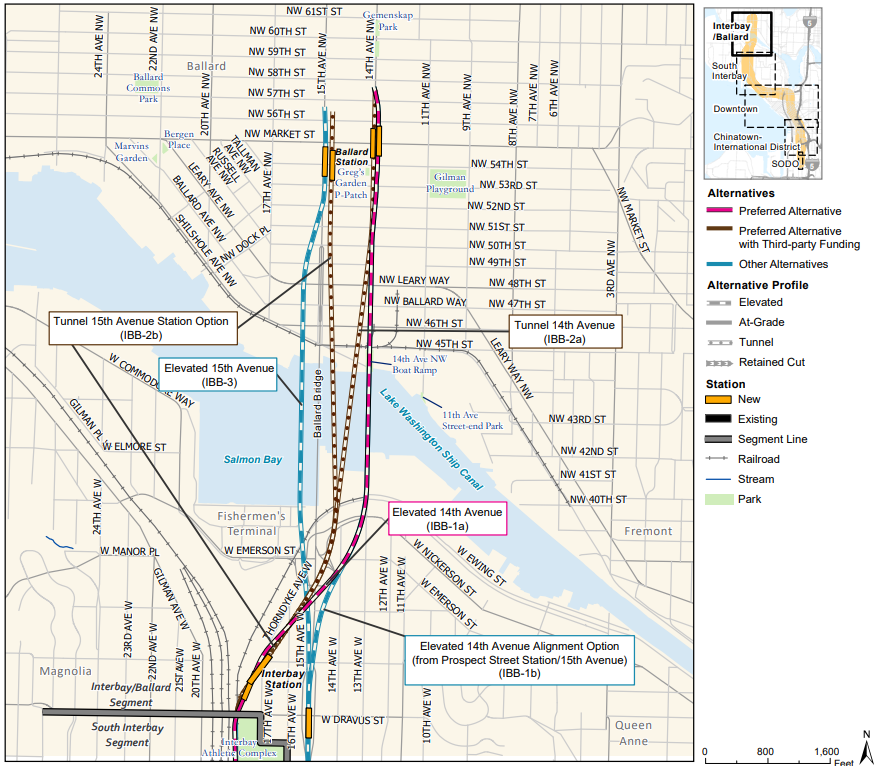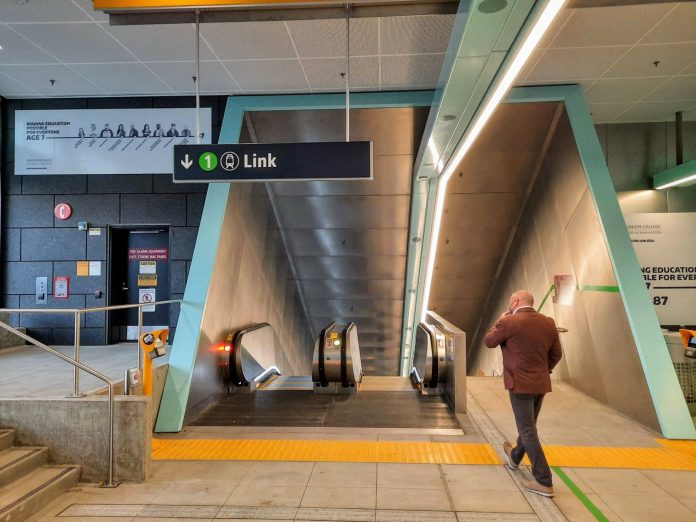
Light rail tunnels to West Seattle Junction and Ballard took a step closer from dream to reality thanks to Sound Transit’s latest analysis suggesting the cost for at least some of the tunnel options would be comparable to the elevated default option. The catch for Ballard Link is that the cheaper tunnel option still puts the station at 14th Avenue NW, farther from Ballard’s historic core. Previously, the agency has said additional tunneling would require third-party funding — which it would likely fall on the City of Seattle to raise, as nobody else was volunteering to chip in the hundreds of millions of dollars that could be required.
“The need for third-party funding depends on which alternatives the Board selects,” Sound Transit spokesperson Rachelle Cunningham said in an email. “Third-party funding will be required for any alternative that exceeds the cost of the preferred alternative assumed in the realigned financial plan.”
The Draft Environmental Impact Statement (EIS) released in January found a tunnel alternative for both extensions came in at a similar cost to the Representative Alternative — the agency’s default option. The Urbanist confirmed this would likely free the cost-competitive tunnel options from third-party funding requirements.
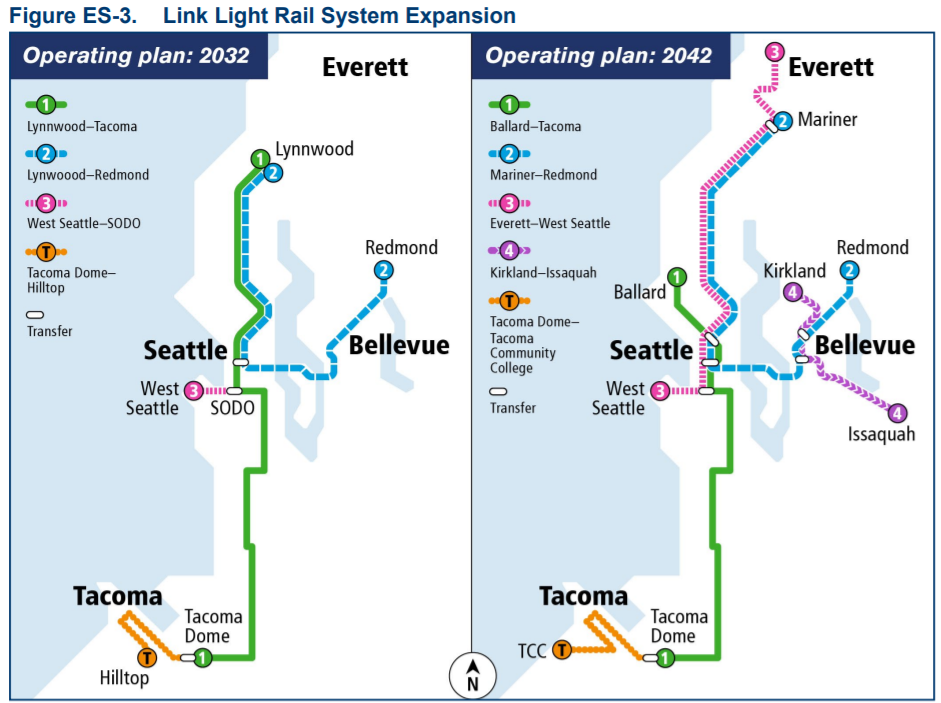
“Based on current cost estimates, some tunnel alternatives in West Seattle and Ballard are comparable in cost to the elevated alternatives (e.g., Medium Tunnel 41st Ave alternative in West Seattle and Tunnel 14th Ave alternative in Ballard),” Cunningham added. “The need for third-party funding will continue to be evaluated as the project alternatives progress through preliminary engineering, but additional funding may not be necessary depending on the scope and cost of the final alignment.”
Tunnel alignments putting Ballard Station at 15th Avenue NE or 20th Avenue NW (technically already eliminated but popular with those would want the station closer to old Ballard) have higher cost estimates, which suggests Sound Transit would require third-party funding for those options. That is unless those cost estimates continue to converge as the designs advance through the engineering process.
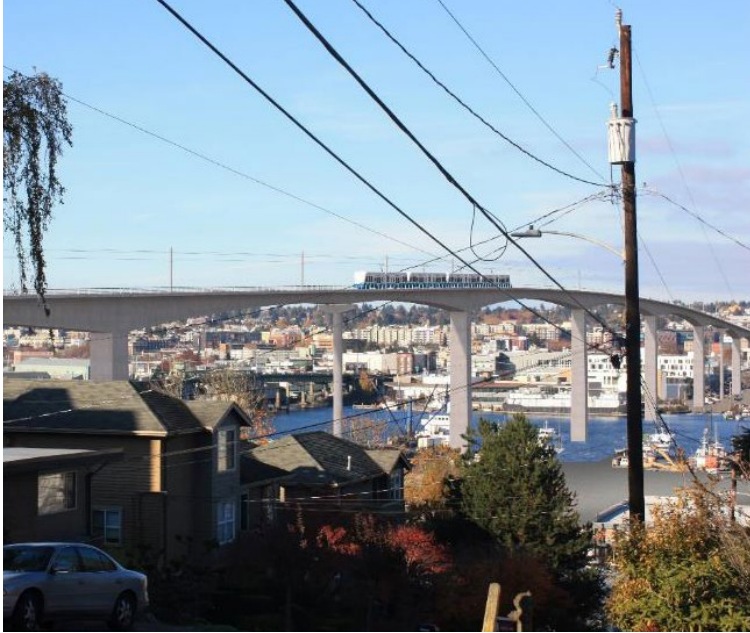
Generally, elevated rail stations and tracks are significantly cheaper than underground stations and tunnels, but topographical and engineering constraints have leveled the playing field in Ballard and West Seattle. American transit agencies have struggled to control costs compared to their counterparts aboard, particularly with projects with extensive tunneling. That said, American elevated rail projects also tend to come in more expensive per mile than comparable projects in other countries, and Sound Transit’s cost escalation issues have hit elevated and tunneled options alike. Cost escalation forced the agency to realign its timelines in 2021.
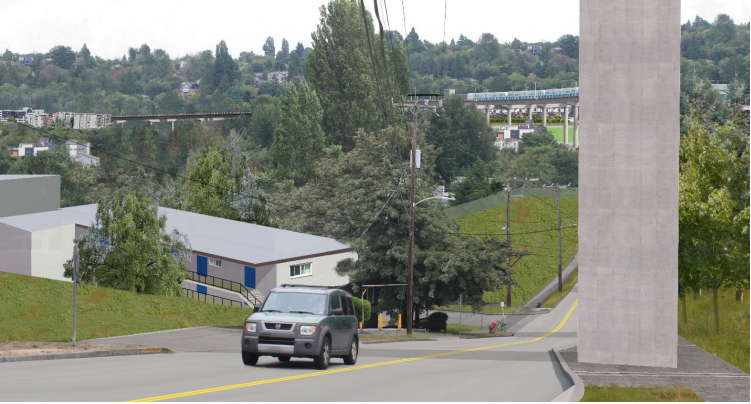
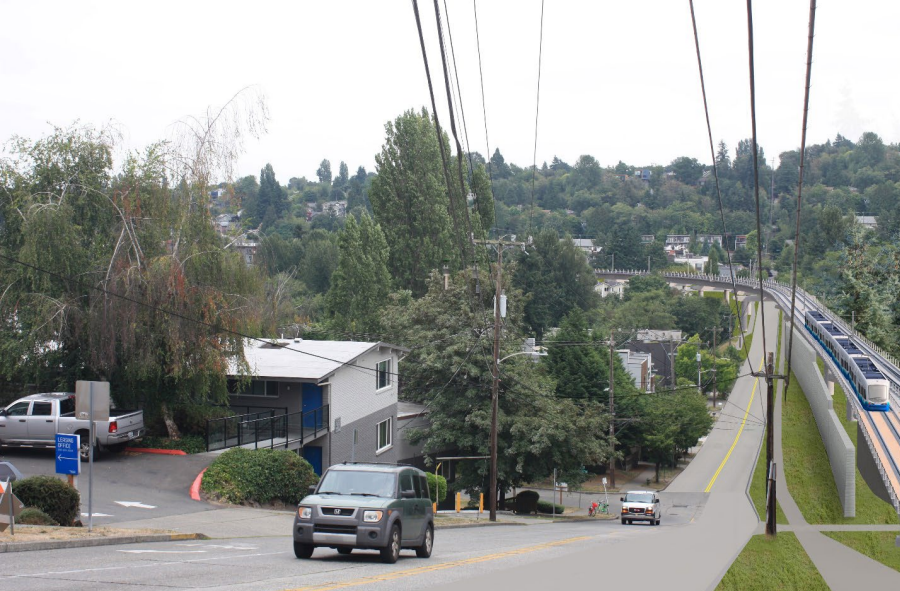
Medium Tunnel 41st Avenue SW gains steam in West Seattle Junction
In West Seattle, the steep slope up to Avalon and Junction would require a tall guideway to provide a gradual enough ramp for the train to climb the hill. This adds cost and has proven to be a focal point for complaints from neighboring residents concerned guideway support columns would be intrusive and ugly. The alignments also grapple with expensive property takings, which are particularly egregious in the elevated Fauntleroy Way options.
Nonetheless, Sound Transit’s Executive Corridor Director Cathal Ridge said in an interview that acquiring an estimated 487 homes and demolishing them appear to be completely necessary due to the inability to fit the station in the street right-of-way because of the City’s fire code, which he said wasn’t likely to change to accommodate a snugger station. Fauntleroy Way is 80 feet wide south of Alaska Street and 90 feet wide north of it, where it runs on a diagonal. For comparison sake, the early design Midtown tunnel station is less than 60 feet wide.
“As we mentioned, it doesn’t fit within the right-of-way,” Ridge said. “It looks like a wide right-of-way but when you’re talking about a station, and you’re talking about platforms, and you’re talking about separation between adjacent buildings, and you’re talking about fire codes, the right-of-way is not wide enough to fit it in there. So you want to put a station right there, you do need to take property either on the east or west side of the street.”
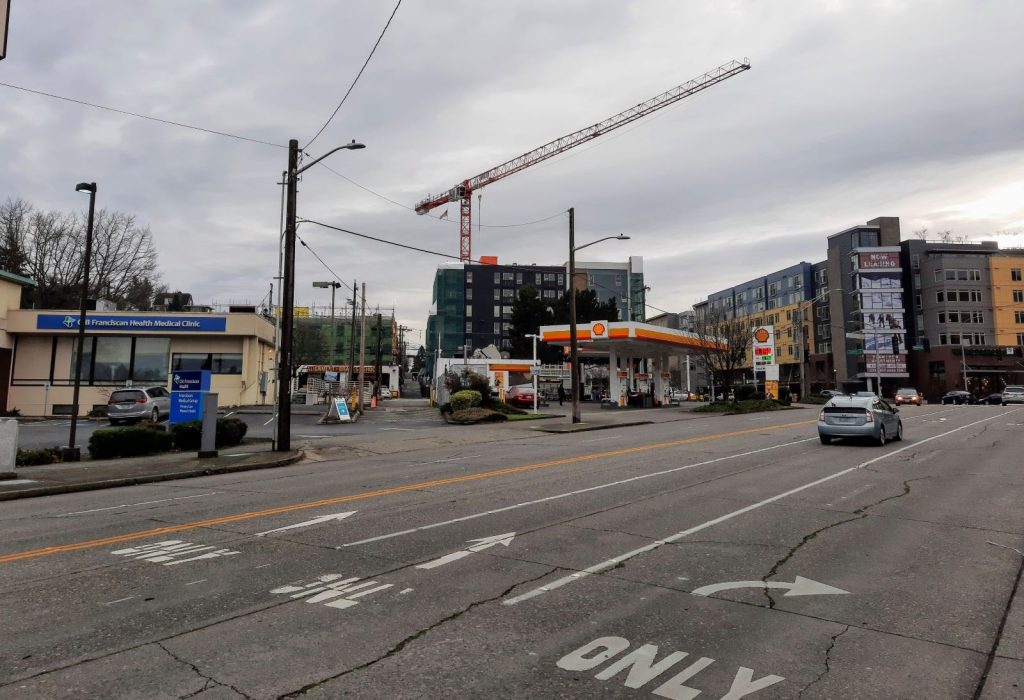
Unfortunately, the opposite side of the street also contains recent large-scale housing development, The Whitaker, which opened in 2017 with 389 apartments. Ridge did appear to leave a glimmer of hope that apartment demolitions for the Fauntleroy Way option could be reduced through further refinement.
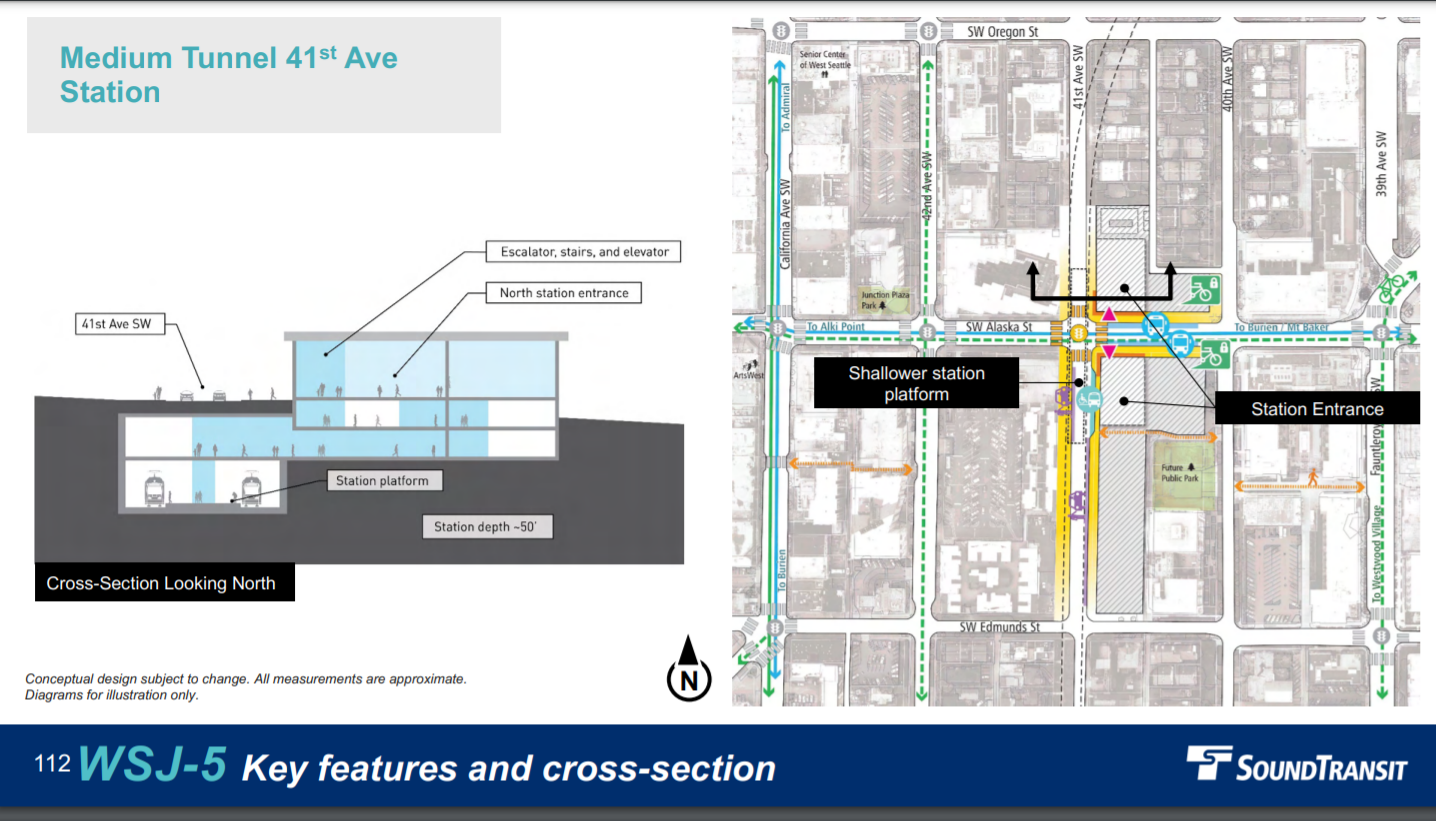
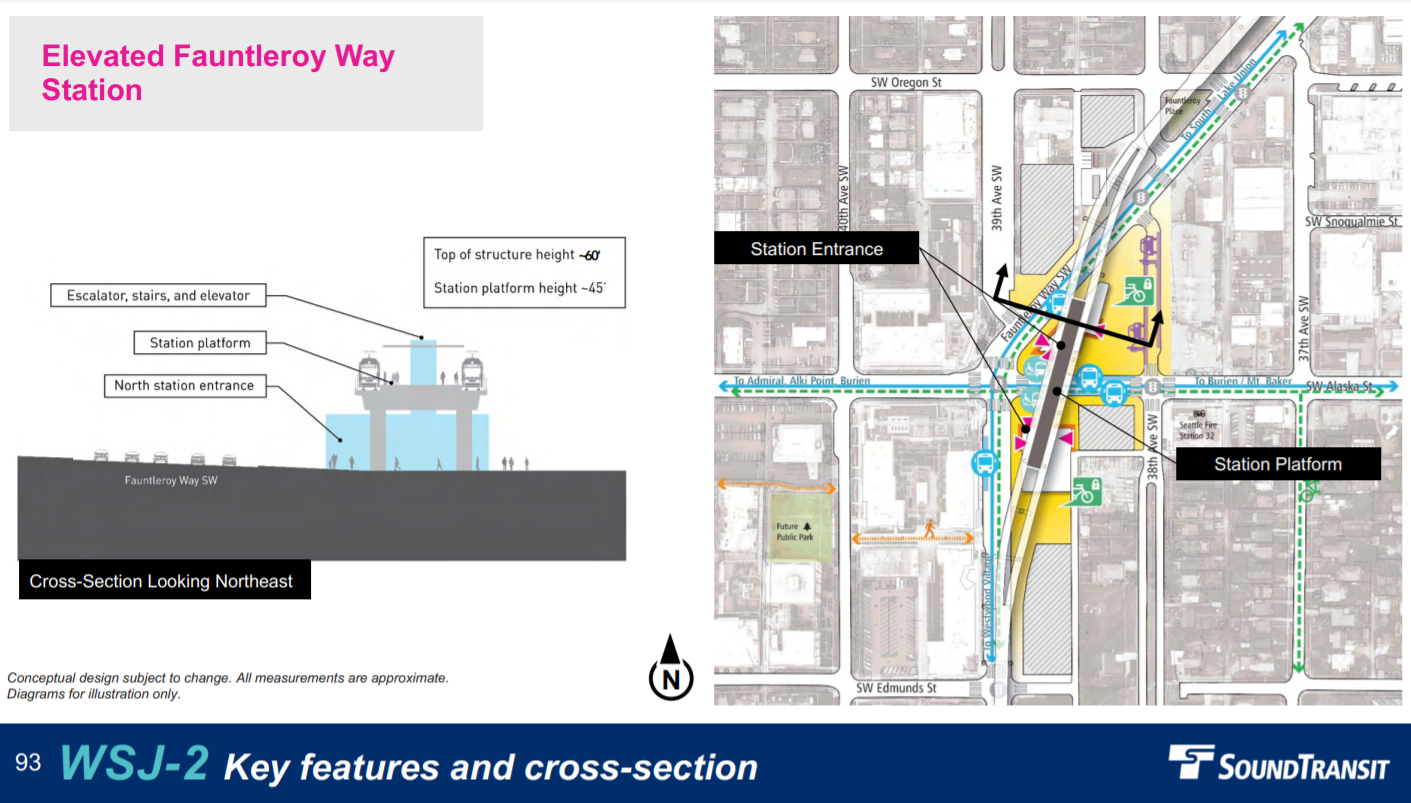
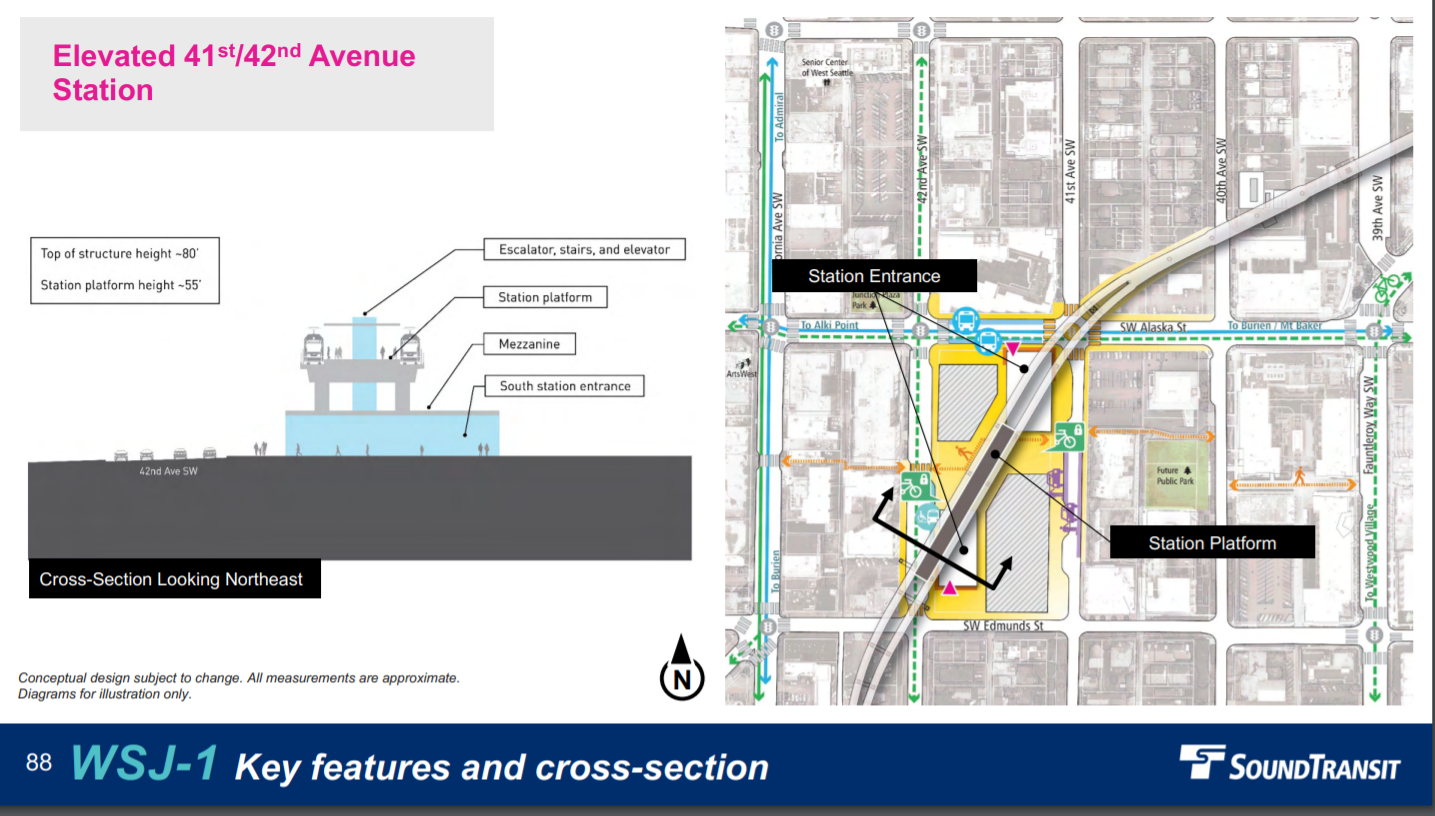
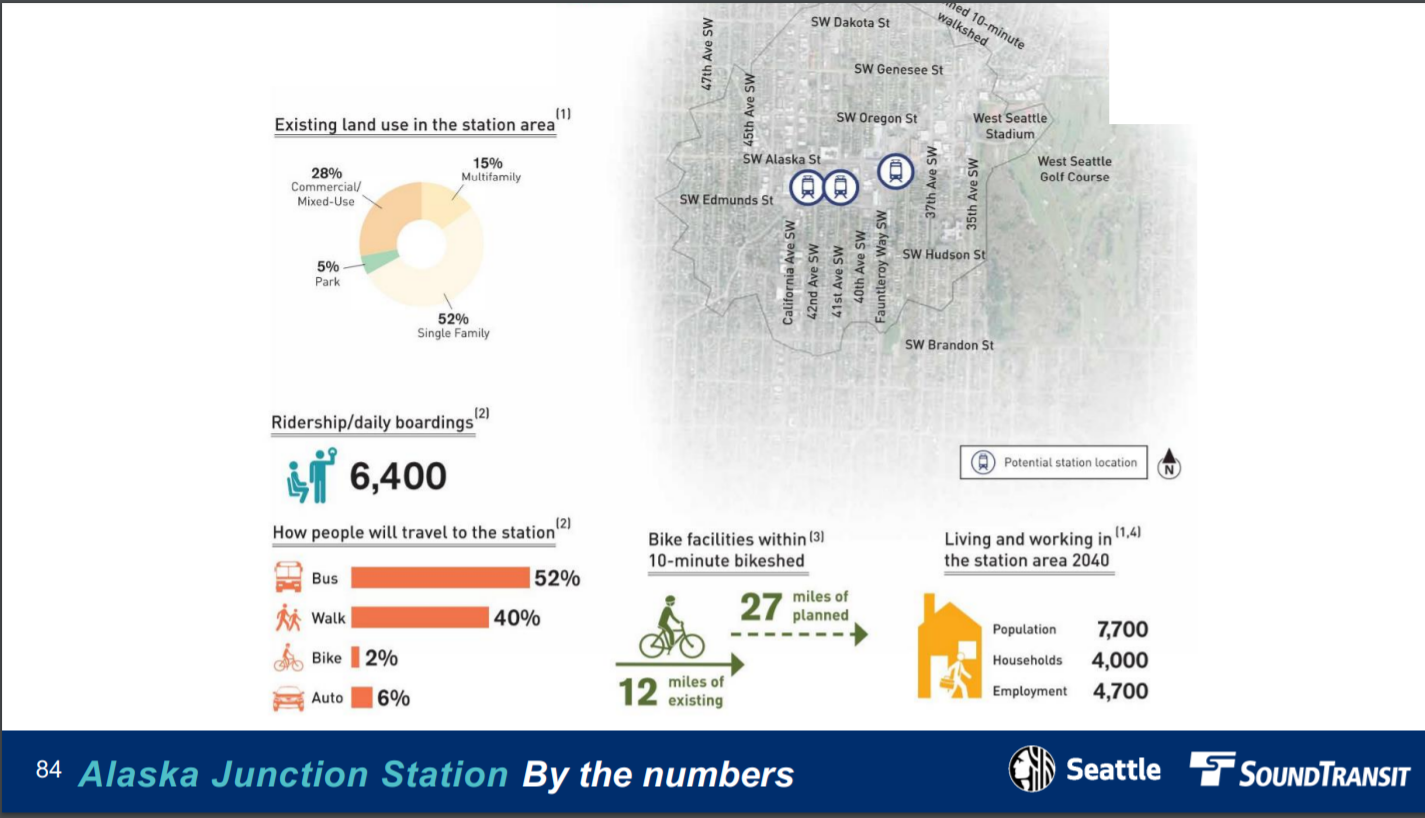
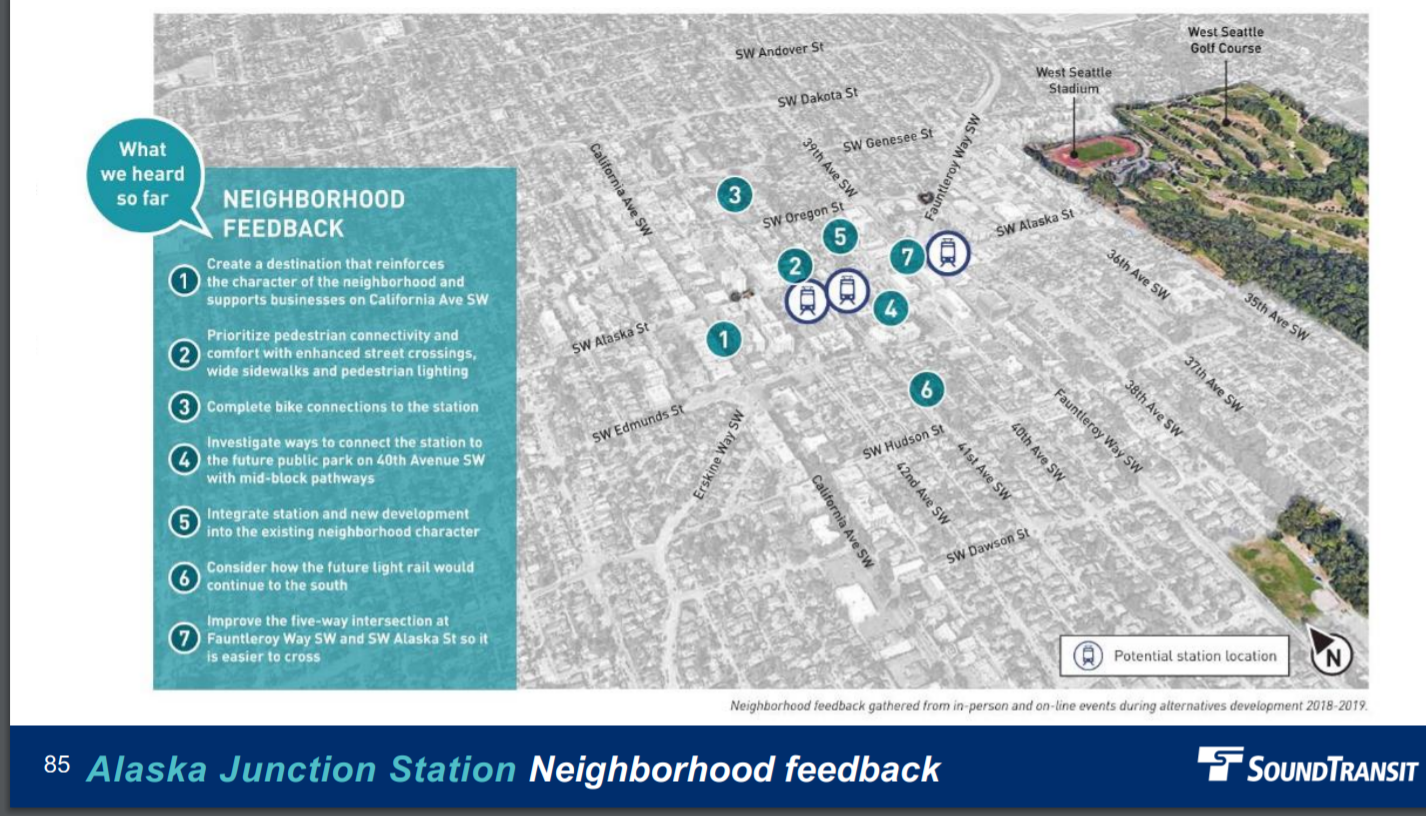
“We really wanted to fit the station in the right-of-way,” Ridge said. “Our working assumption based on our design right now is that you would need to take that apartment building. Of course, that’s a new building — not desirable to do so. If we were to move forward with this idea, we’d continue to look at ways to try to refine that alignment, that station location in some way to try and reduce that impact if possible.”
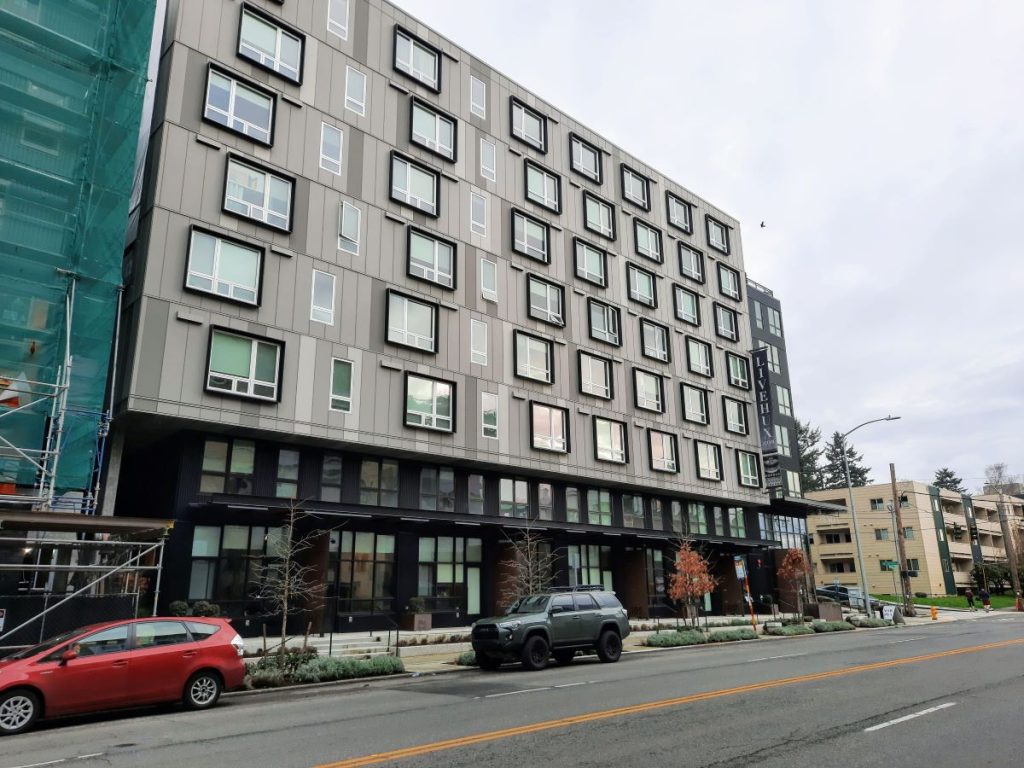
14th Avenue NW offers cost-competitive Ballard tunnel station
In Ballard, crossing Salmon Bay will be a complicated undertaking in any option. The bridge required for elevated alignments wouldn’t be cheap, which brings the cost estimates closer together. Similarly to West Seattle, property takings are a major cost driver and appear to be pricier at 15th Avenue NW than at 14th Avenue NW, which is less developed.
The Ballard Station options still officially in contention have similar cost estimates. The estimate for the 15th Avenue tunnel station is $200 million higher than the 14th Avenue tunnel station, which would apparently cost the same as the cheapest elevated options. The Sound Transit Board identified one preferred elevated option at 14th and two preferred tunnel options: one at 14th and one at 15th. In Sound Transit’s designs thus far, the elevated option at 14th pairs with a high fixed bridge, but the elevated options at 15th pair with a lower moveable bridge west of the existing Ballard Bridge that would need to swivel open for tall boats.
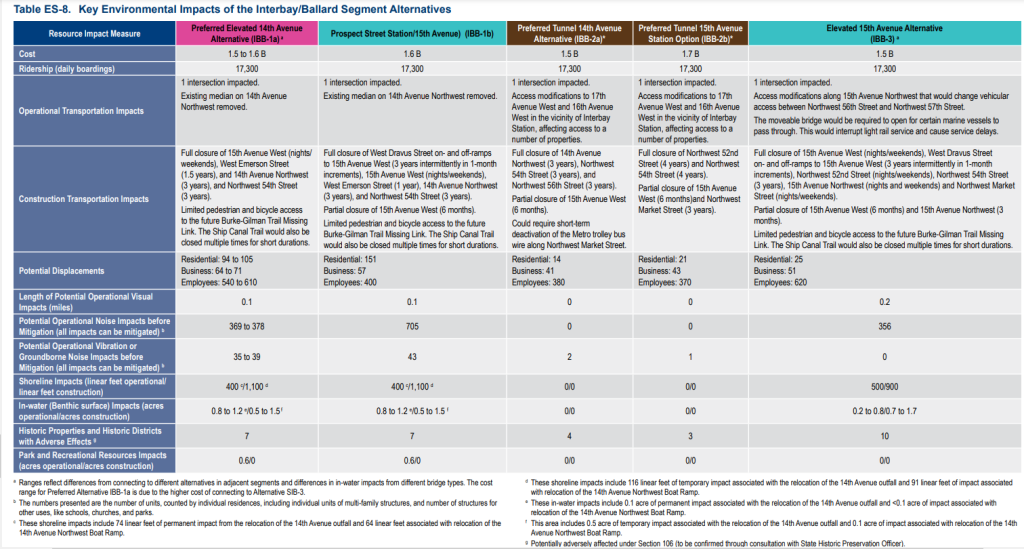
The bridge linking to an elevated 15th Avenue station could be a fixed bridge, Ridge said, but that would require additional study since that wasn’t included in the Draft EIS. A fixed bridge to a 15th Avenue Station would be more logical west of the Ballard Bridge due to fewer property takings, he added.

A moveable bridge has been a non-starter for transit advocacy groups like Seattle Subway, which has pushed for a tunnel alignment since they also prefer to site the station as far west close the historic core of Ballard as possible. The Port of Seattle has also expressed worries about the siting the bridge west of 15th Avenue because it would impact its Fisherman’s Terminal operations and docks.
The Urbanist’s Ray Dubicki made the case for an elevated station at 15th Avenue NW paired with changes to tame the speedway into a more hospitable urban street. Such a station could pair still pair with a fixed bridge, but it it hasn’t been studied yet and would likely require more property takings to do, which could drive up the cost. Still, Dubicki argues this would be the biggest win for the neighborhood, since calming 15th Avenue is much needed and it’s the most logical corridor to extend the line north to Loyal Heights, Crown Hill, Greenwood, and beyond.
Sound Transit said 14th Avenue NW could support a northward expansion, but Ridge said the line would likely transition to a different path such as 15th Avenue NW before reaching Ballard High School, which consumes two blocks of 14th Avenue between NW 65th Street and NW 67th Street and obstruct light rail’s path along that corridor.
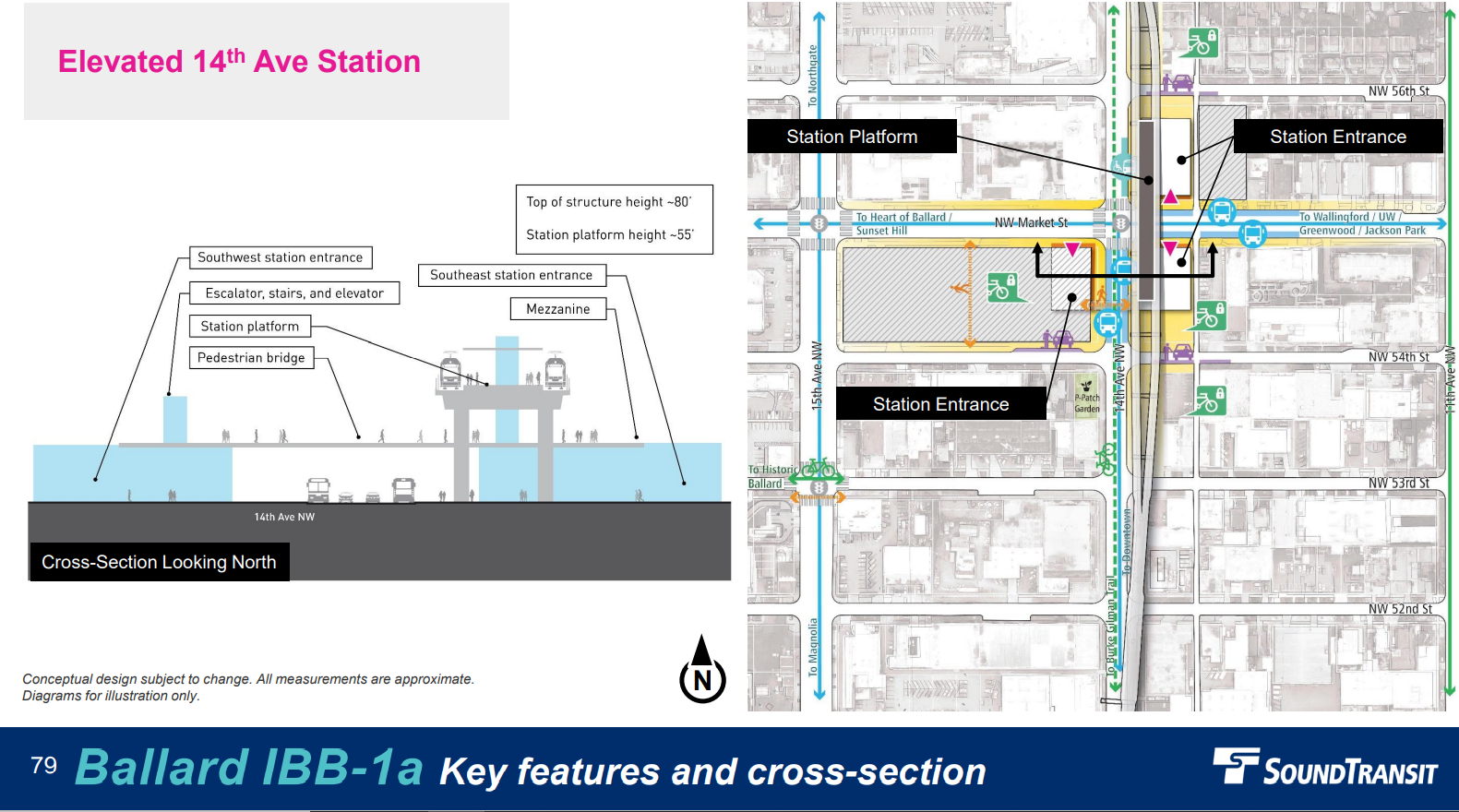
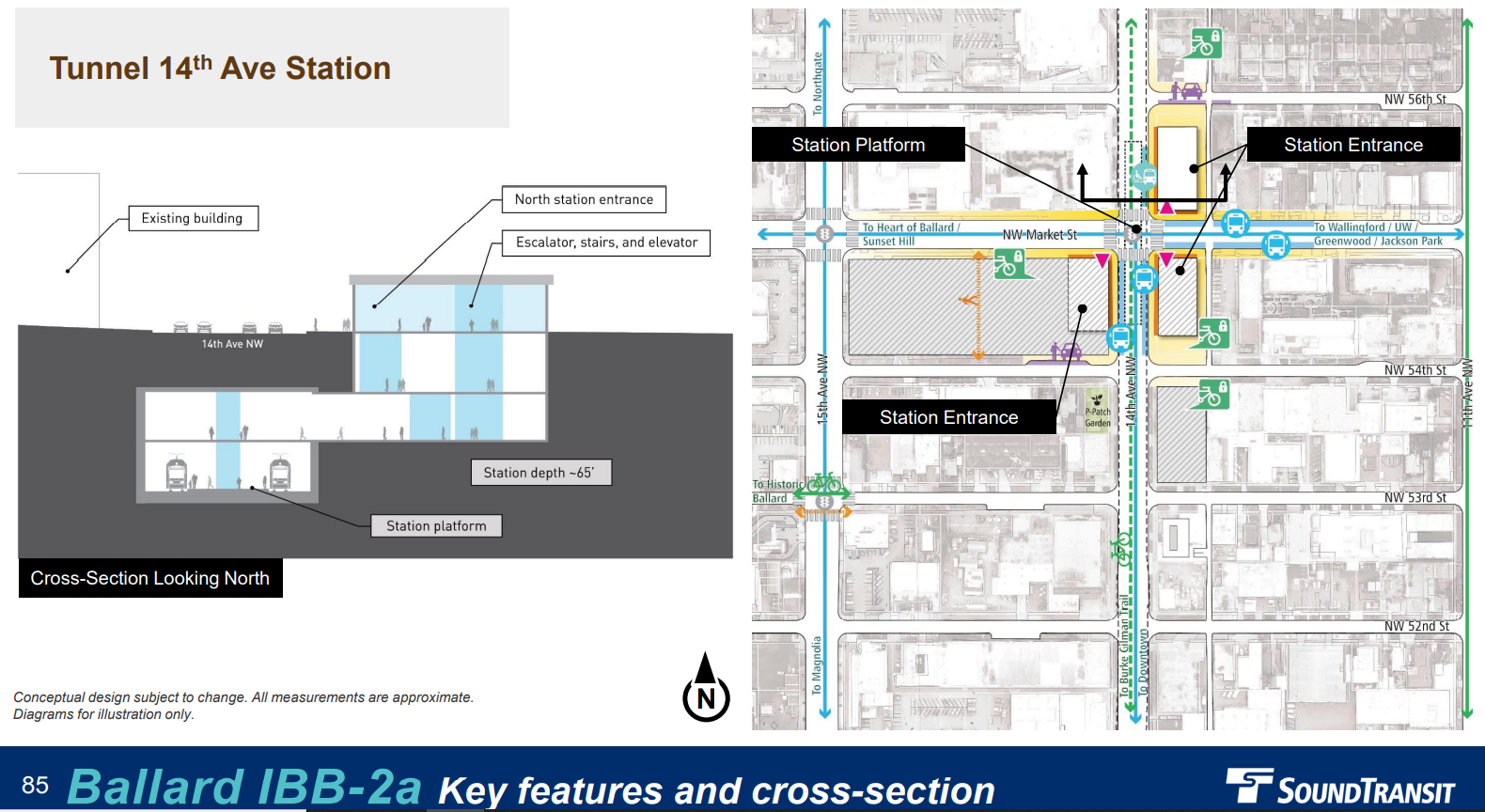
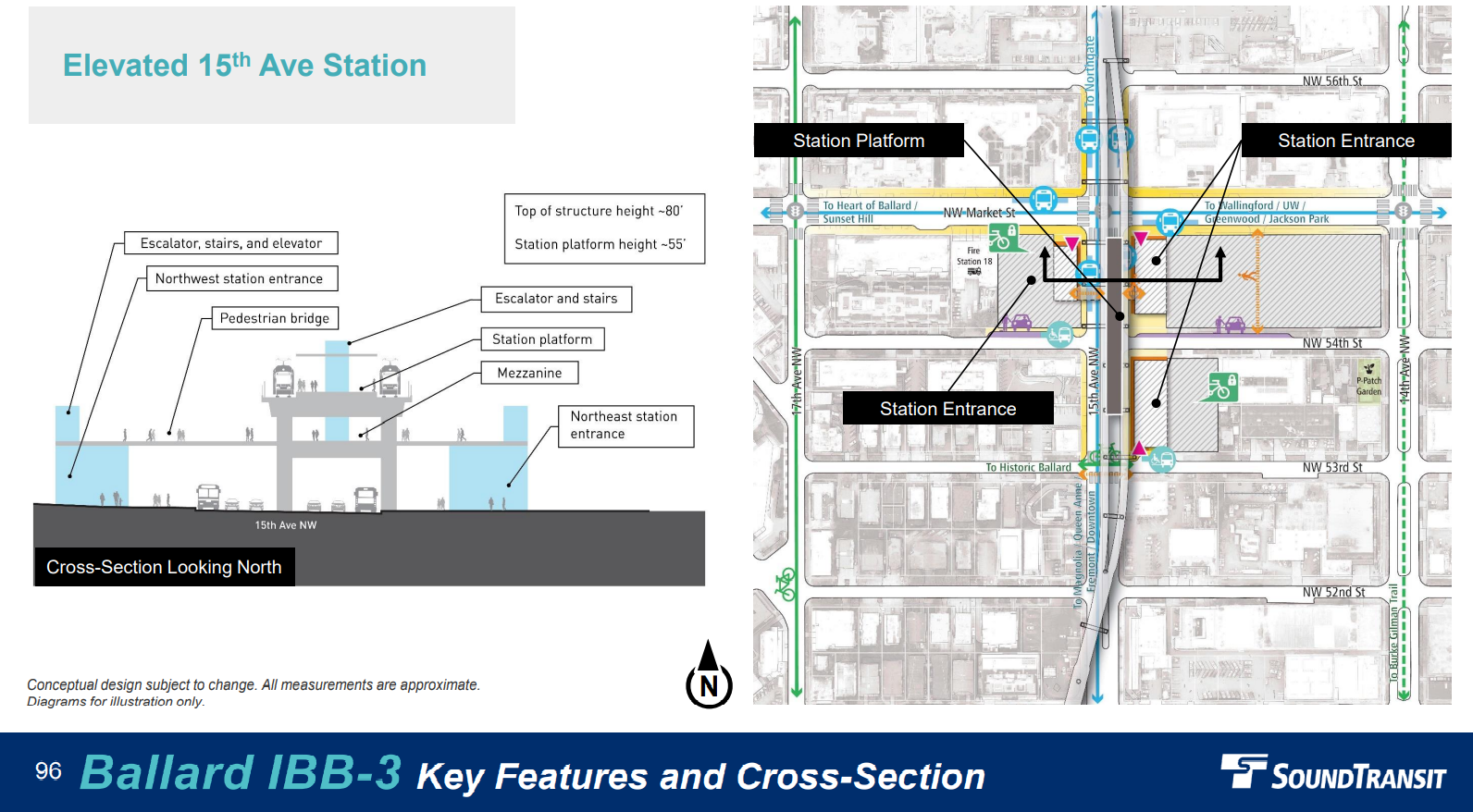
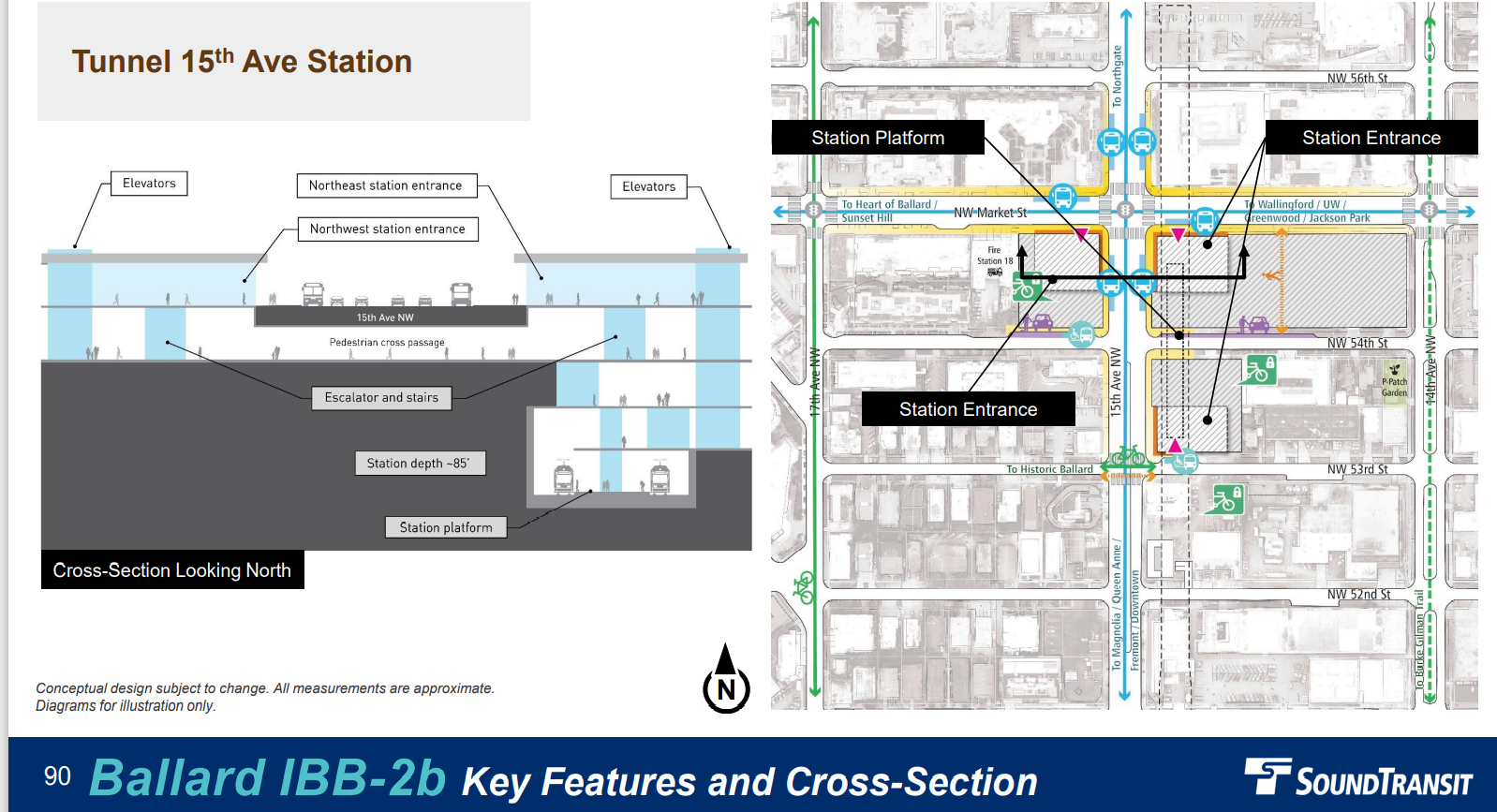
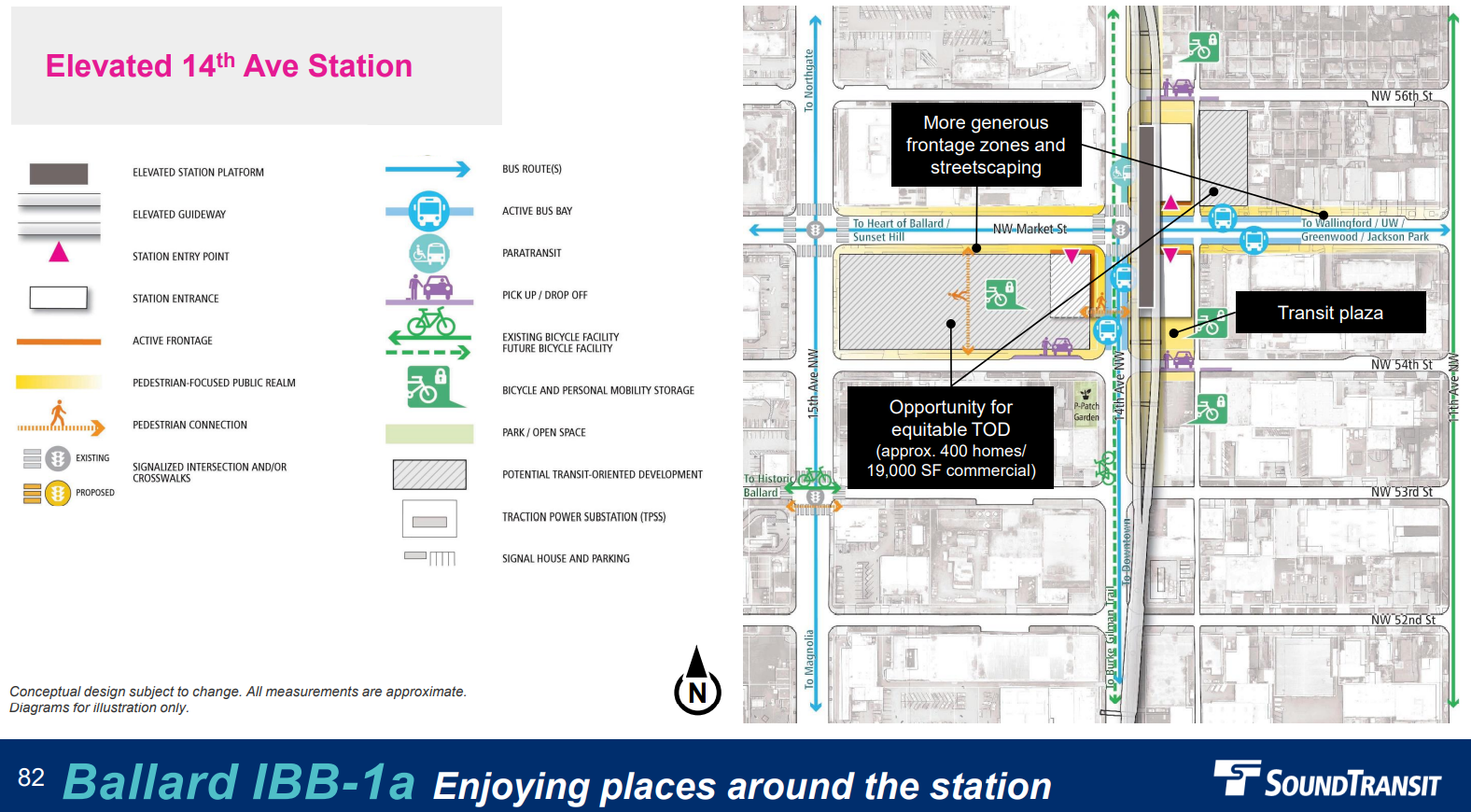
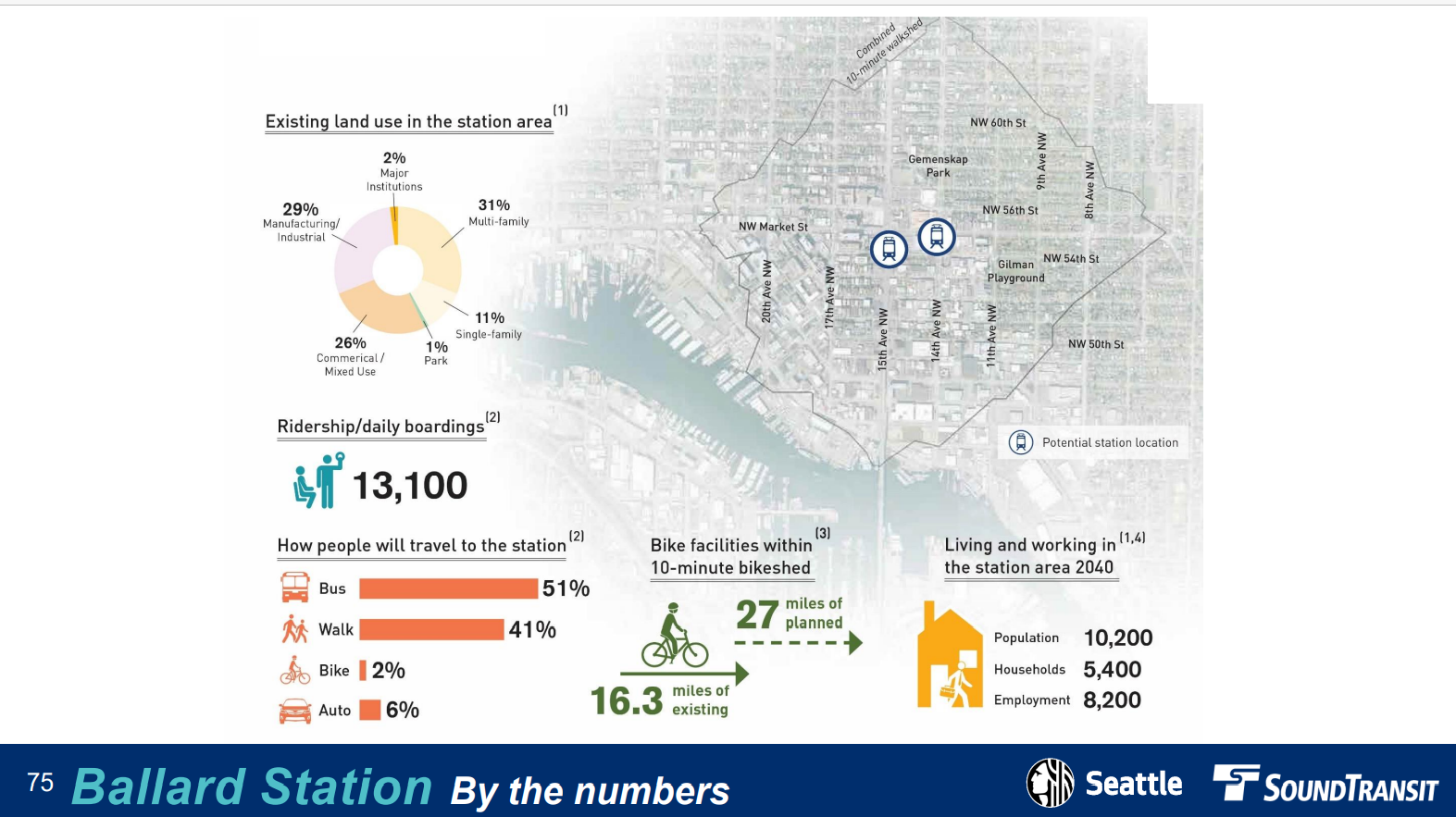
A tunnel station in Ballard may end up pairing with a tunnel station in Loyal Heights, sidestepping the issue of siting elevated guideway. But adding more tunnels and underground stations would also add additional costs to the future extensions. No matter where the agency turns, there are tradeoffs. Still, the 14th Avenue tunnel station coming in at the same cost as the elevated station perhaps suggests the delta wouldn’t be that large.
Approaching a decision
At this juncture, it appears Seattle could select Medium Tunnel 41st Avenue alternative in West Seattle and Tunnel 14th Avenue alternative in Ballard and suffer no third-party funding requirements, eliminating one major political headache and hurdle to those options. That appears to be the popular course of action in West Seattle anyway, but the 14th Avenue siting in Ballard could take some convincing.
Councilmember Dan Strauss, whose 6th District includes Ballard, mentioned the idea of bringing back the 20th Avenue NW option during a recent city council meeting. Sound Transit noted that option was eliminated due to cost concerns. However, the agency could be pressured to reconsider and get an updated estimate which could be more in line with other options than they initially thought. Seattle Subway has backed the idea of studying the option.
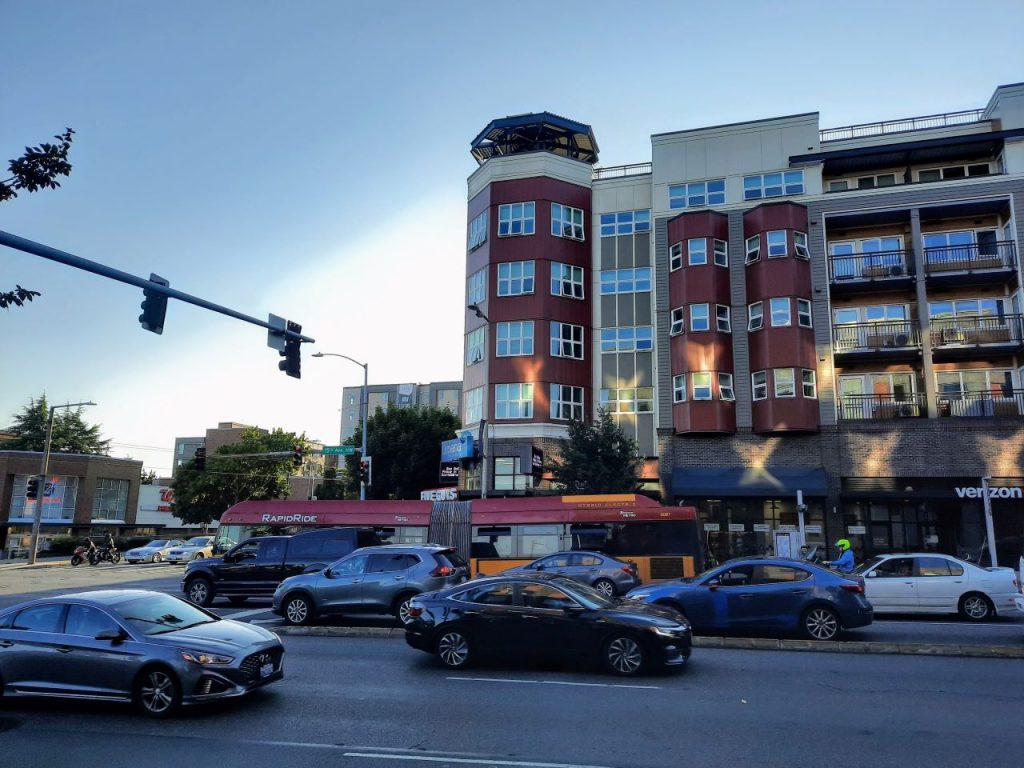
The 14th Avenue station location is a half-mile from the bustling Market Street and 22nd Avenue NW intersection, or a 10-minute walk by Google Maps’ estimate. The main drag on Ballard Avenue is a couple minutes farther still. While this might seem like siting the station outside the heart of the neighborhood, development is spilling eastward along NW Market Street, which is expanding the urban core of Ballard. Even with a 14th Avenue Station, Sound Transit may be able to design a station entrance on the west side of 15th Avenue to avoid the long wait for the pedestrian signal to cross the busy, high-crash thoroughfare at the surface.
Future generations might not think of the heart of Ballard as being in the same spot as we do today. Especially if a 14th Avenue light rail station changes their mental map and spurs further rezones to promote urban development to the east. Already considerable development is happening east of 15th Avenue NW, focused along the Market Street corridor. A light rail station would surely be a catalyst for that trend to continue.
Wherever the stations end up landing, Ballardites and West Seattleites anxiously await light rail’s arrival.
Doug Trumm is publisher of The Urbanist. An Urbanist writer since 2015, he dreams of pedestrian streets, bus lanes, and a mass-timber building spree to end our housing crisis. He graduated from the Evans School of Public Policy and Governance at the University of Washington in 2019. He lives in Seattle's Fremont neighborhood and loves to explore the city by foot and by bike.


